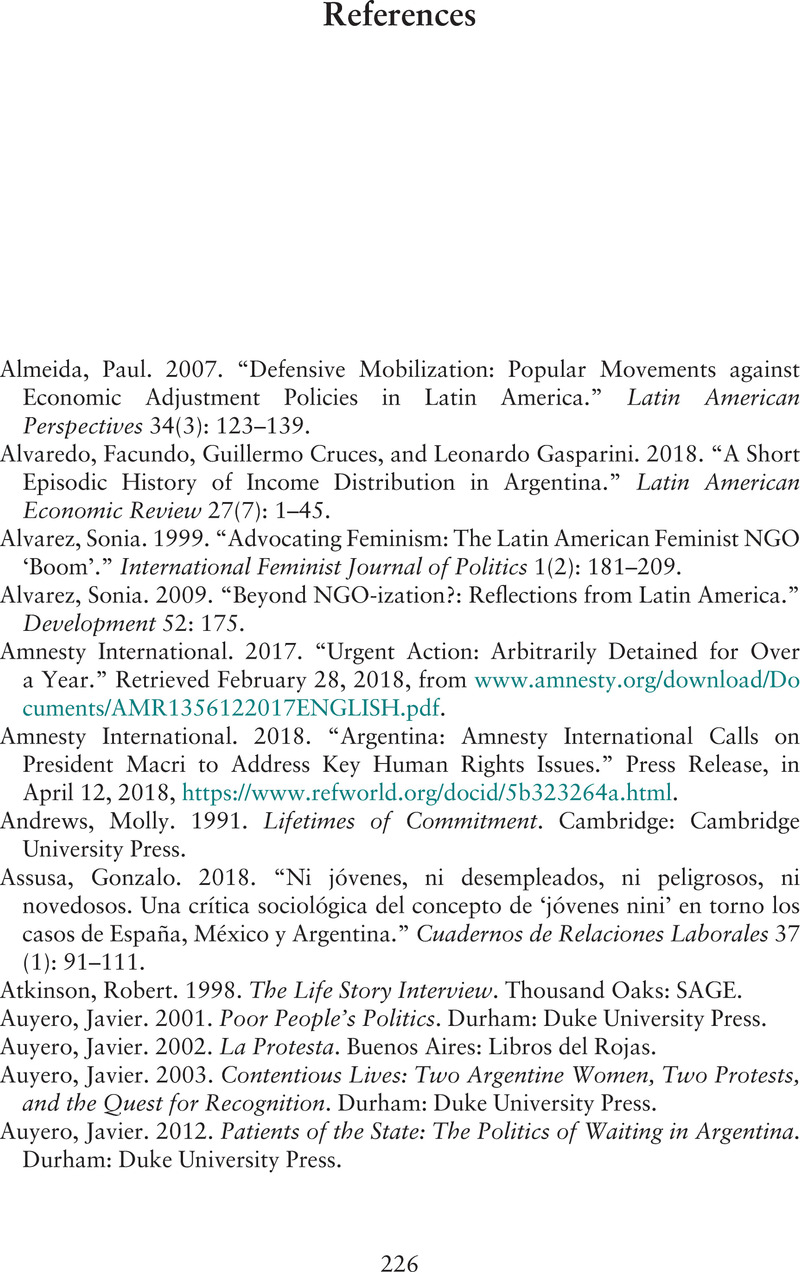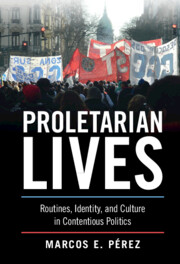Book contents
- Proletarian Lives
- Cambridge Studies in Contentious Politics
- Proletarian Lives
- Copyright page
- Dedication
- Contents
- Figures
- Acknowledgments
- 1 Introduction
- 2 “I Became a Bum”
- 3 “The Struggle Is on the Streets”
- 4 “I Know What It Means to Follow a Schedule”
- 5 “If It Rains or Hails, You Still Have to Show Up for Work”
- 6 “We Drink Mate, Eat a Good Stew, Talk … and That Way Time Flies”
- 7 “A Small Thing to Get By”
- 8 Conclusion
- Book part
- References
- Index
- Books in the Series (continued from p. iii)
- References
References
Published online by Cambridge University Press: 24 March 2022
- Proletarian Lives
- Cambridge Studies in Contentious Politics
- Proletarian Lives
- Copyright page
- Dedication
- Contents
- Figures
- Acknowledgments
- 1 Introduction
- 2 “I Became a Bum”
- 3 “The Struggle Is on the Streets”
- 4 “I Know What It Means to Follow a Schedule”
- 5 “If It Rains or Hails, You Still Have to Show Up for Work”
- 6 “We Drink Mate, Eat a Good Stew, Talk … and That Way Time Flies”
- 7 “A Small Thing to Get By”
- 8 Conclusion
- Book part
- References
- Index
- Books in the Series (continued from p. iii)
- References
Summary

- Type
- Chapter
- Information
- Proletarian LivesRoutines, Identity, and Culture in Contentious Politics, pp. 226 - 240Publisher: Cambridge University PressPrint publication year: 2022



